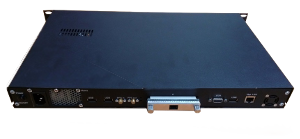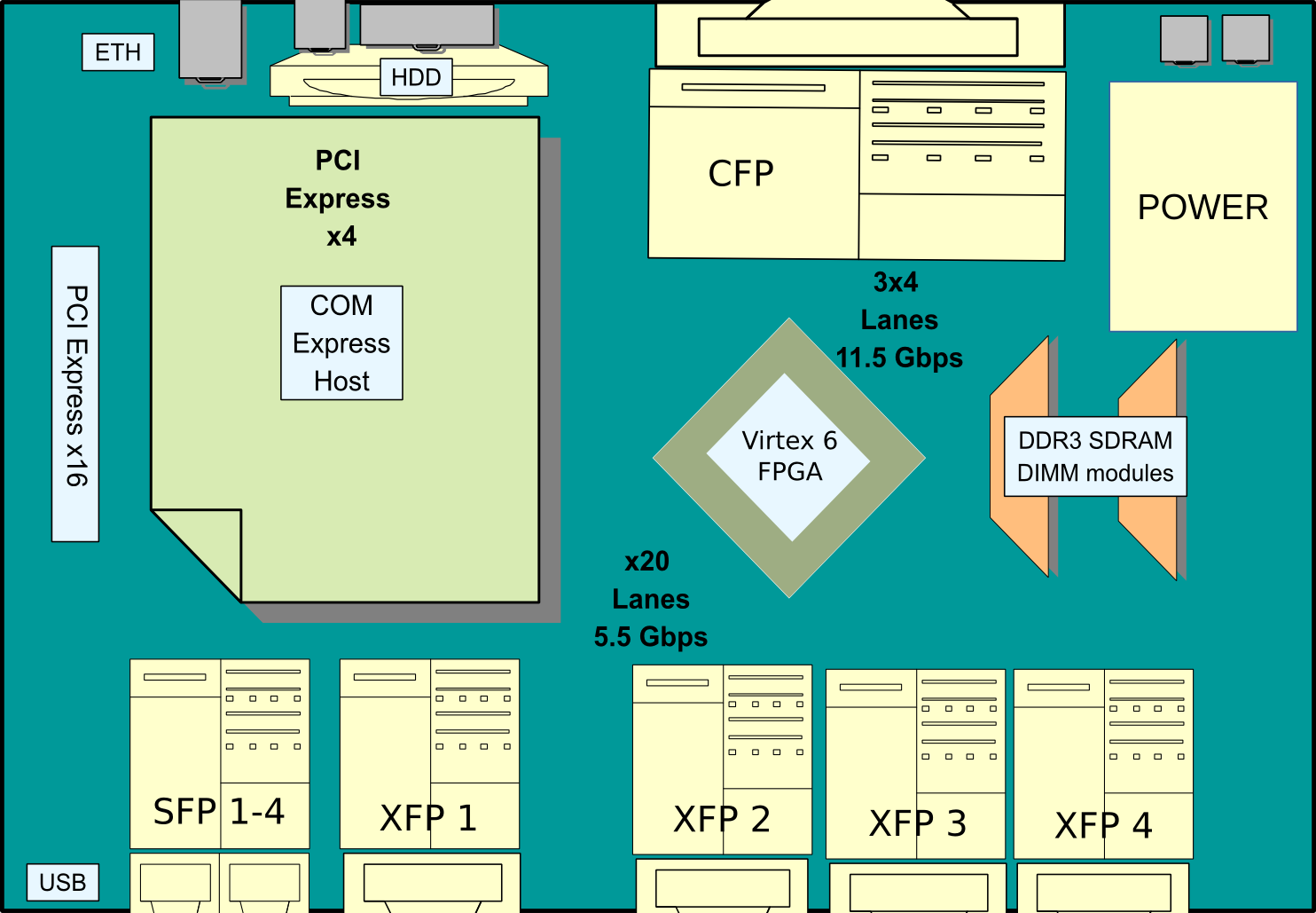C-GEP

The C-GEP is a programmable, Ethernet-capable, FPGA-based flexible device platform from AITIA. It has been developed to host services and applications for high speed networks ranging from 1 Gb/s to 100 Gb/s . The architecture allows various networking applications for implementation. With the optimized firmware on its FPGA, it naturally handles the tasks of SDN (Software Defined Networking) Forwarding/Data plane. The on-board Linux PC can host the Control Plane functions for SDN, as well as various management tasks. With other firmware on the FPGA, C-GEP can be used as media gateway; traffic generator, or provide hardware-support for DPI (Deep Packet Inspection) tasks.
The C-GEP
- comes in different interface configurations,
- functionalities can be changed by reprogramming the firmware,
- has an easy-to-use web-based management interface,
- has capabilities to directly forward 100 Gb/s Ethernet traffic to/from 1/10 Gb/s Ethernet,
- is designed for measurably low power consumption,
- has lowered risks for extra developments since composability, predictability and dependability issues are tackled by design.
The C-GEP was designed, developed and implemented with the ultimate intention of creating a heavily programmable, highly customisable, multi-purpose networking device.
Architecture
The C-GEP occupies a standard 1U x 19 inch rack mount case, with active cooling on the FPGA, redundant power supplies, and passive cooling on optical interface cages. Network interface connectors are mounted on front and rear panel; management, and mains connectors are on the rear panel. The main part of the hardware is the Virtex 6 (XC6VHX255T) FPGA chip. The external interfaces (SFP, XFP, CFP and PCI-E slots) connect to the FPGA’s RocketIO ports, which allow high-speed communication between interfaces. Further variation of interfaces (Gigabit fiber, 10/100 Ethernet, STM-1 optic etc…) is possible by using SFP module receivers.
Configurations
The C-GEP platform's main advantage is the highly customizable interface configuration. Whatever network application you aim for, there is surely a C-GEP for it!
Our most popular configurations include:
- C-GEP 20: 2x10 Gb/s back, 20x1 Gb/s front (C-Board v2.0),
- C-GEP 40: 2x40 Gb/s back, 4x1 + 4x10 Gb/s front,
- C-GEP 100: 1x100 Gb/s back, 4x1 + 4x10 Gb/s front.

Interfaces
Front mounts:
- 4/(5) XFP module receptacle for 10 Gb/s Ethernet (C-GEP 100,C-GEP 40),
- 20 SFP module receptacle for 1000M/100M/10M Ethernet (C-GEP 20).
- 1 CFP module receptacle for 100 Gb/s Ethernet (C-GEP 100),
- 2 QFP module receptacle for 40 Gb/s Ethernet (C-GEP 40),
- 2/(4) XFP module receptacle for 10 Gb/s Ethernet (C-GEP 20),
- 2 USB host connectors (+1 internal for booting a pen-drive, and 4 more on pin headers),
- 1 RJ45, 10/100 Ethernet for management LAN,
- 2 DB9 for RS232 console connection.
- 2 SODIMM200 receptacle for 1.8V DDR3 SDRAMs,
- 1 Express Card module receptacle,
- 1 COM (Computer On Module) Express receptacle.
- 1 HDD for OS and management interface.
- 1 Atomic clock module receptacle (SA.45s CSAC).
The management computer of the C-GEP is implemented using COM Express Type-1 (or higher) child board, running Linux operating system.
Application features
- High precision 64 bit timestamp with 4/8 nsec resolution synchronised to an atomic clock or by using PTP protocol,
- sophisticated packet processors: parsing, filtering, steering, classification,
- lossless packet capture, and on-the-fly packet headering,
- header-only capture: configurable protocol layer depth, decoded by hardware on-the-fly,
- packet buffering, and TCP streaming to receiving monitors,
- parameterized, line-speed-capable packet/flow generator for active measurements.